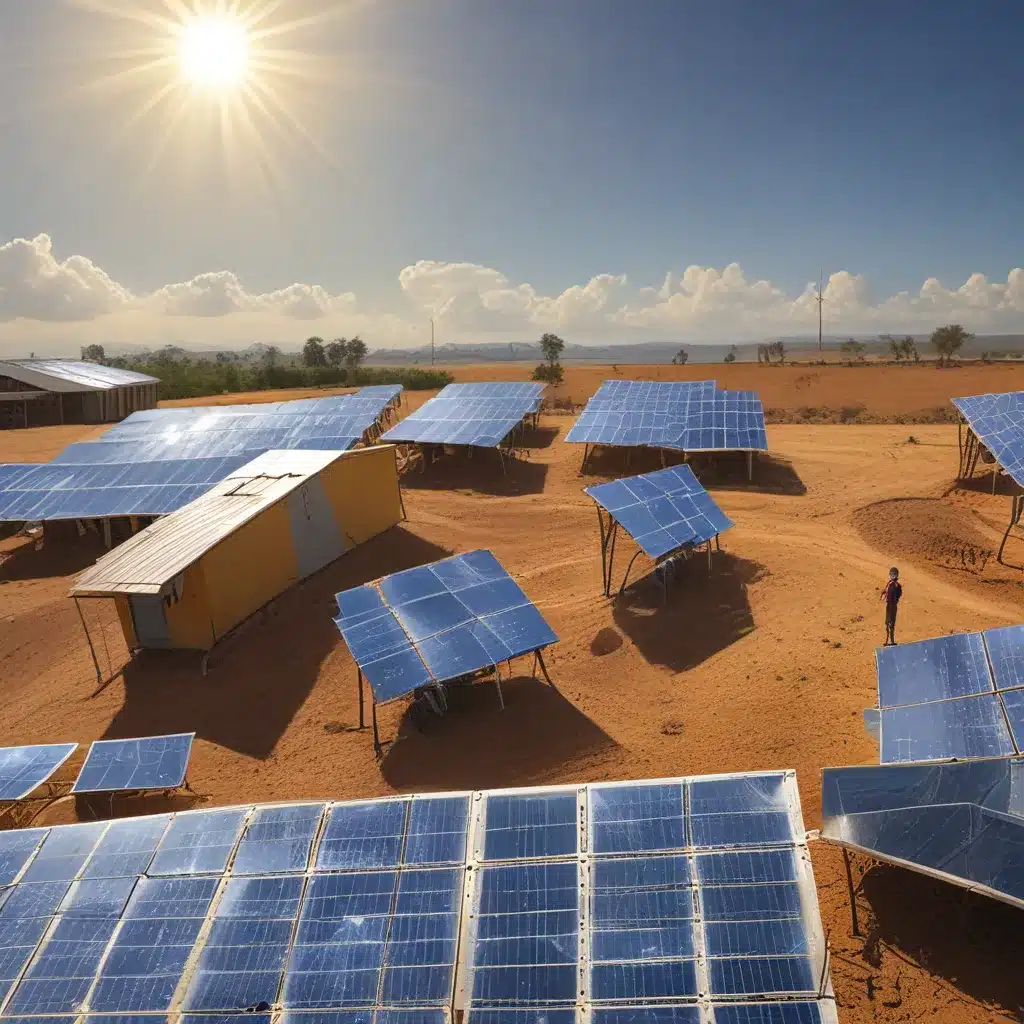
Shining a Light on the Power of Solar in Emerging Economies
As I sit here in my cozy home, sipping on a warm cup of coffee, I can’t help but feel incredibly grateful for the reliable electricity that powers my everyday life. But for millions around the world, access to consistent and affordable power remains a distant dream. That’s where the sun – and the incredible potential of solar energy – comes into play.
Recent reports indicate that a staggering 775 million people globally lack access to electricity. Many of these individuals reside in developing nations, where traditional energy infrastructure has struggled to keep up with growing demands. However, the tide is turning, and solar power is emerging as a transformative solution to bridge this “energy poverty” gap.
The Solar Revolution in Developing Countries
Just a few decades ago, solar technology was prohibitively expensive and inaccessible for most developing regions. But thanks to rapid advancements in photovoltaic (PV) panel efficiency and plummeting costs, solar is now more affordable and widely adopted than ever before. Many developing countries are seizing this opportunity and leading the global charge towards a sustainable energy future.
Consider the example of India – a nation with ambitious renewable energy targets. By 2030, they aim to generate a staggering 500 gigawatts (GW) of electricity from renewable sources, with solar playing a central role. Already, India boasts an impressive 48.55 GW of solar capacity, making it the world’s third-largest solar market.
But India is not alone in its solar revolution. Bangladesh, for instance, has become a global leader in the adoption of solar home systems, with predictions of over 6 million systems installed by the end of this decade. This remarkable progress is driven by a combination of government incentives, private sector innovation, and a deep-rooted desire to provide reliable, clean energy to all.
Powering Progress: The Multifaceted Benefits of Solar
The benefits of solar power in developing countries extend far beyond just reliable electricity. This renewable energy source is transforming lives, boosting economies, and safeguarding the environment – all at the same time.
Energizing Rural Communities
One of the most significant advantages of solar power is its ability to reach remote, off-grid areas that traditional power grids have struggled to serve. Solar panels and systems can be easily installed in these communities, providing much-needed electricity for essential services like healthcare, education, and small businesses.
Imagine a village where children can now study and do their homework after sunset, or a rural health clinic that can reliably power its medical equipment and vaccines. These simple yet profound changes are empowering people and opening up new opportunities for development.
Fueling Agricultural Innovations
Agriculture is the backbone of many developing economies, and solar power is proving to be a game-changer in this sector. From solar-powered irrigation systems that optimize water usage to solar-powered cold storage facilities that reduce food waste, this renewable energy source is boosting productivity, efficiency, and food security.
I recently learned about a women-led cooperative in Kenya that is using solar-powered dryers to preserve their harvest, ensuring a steady income and nutritious food for their families year-round. Stories like these remind me of the incredible potential of solar power to transform lives and communities.
Driving Industrial Growth
But the impact of solar doesn’t stop at the rural level. Developing countries are also harnessing the power of solar to fuel industrial development and economic growth. By providing reliable, cost-effective energy, solar is opening up new possibilities for manufacturing, processing, and other commercial activities – even in areas that were previously off the grid.
Imagine a textile factory in India that can now operate year-round, thanks to the steady supply of solar power. Or a food processing plant in Kenya that can use solar-powered drying and storage to extend the shelf life of their products. These are the kinds of transformative changes that solar is bringing to developing economies.
Overcoming the Challenges
Of course, the transition to solar power in developing countries is not without its challenges. Initial installation costs can be a significant hurdle, and some regions may face limitations due to their geographical location or unpredictable weather patterns.
But these obstacles are not insurmountable. With the right support and investments, developing nations can overcome these barriers and unlock the full potential of solar energy. International aid agencies, development organizations, and private sector players are all playing a crucial role in driving this transition.
A Brighter Future Powered by the Sun
As I reflect on the transformative power of solar energy, I can’t help but feel a sense of hope and excitement for the future of developing countries. By harnessing the abundant, renewable, and clean power of the sun, these nations are not only addressing their energy needs but also paving the way for sustainable economic and social development.
From providing reliable electricity to remote communities to powering agricultural innovations and industrial growth, solar is truly a shining beacon of progress. And as companies like Solar A Systems Inc. continue to lead the charge in solar energy solutions, I’m confident that the future of the developing world will be brighter than ever before.


